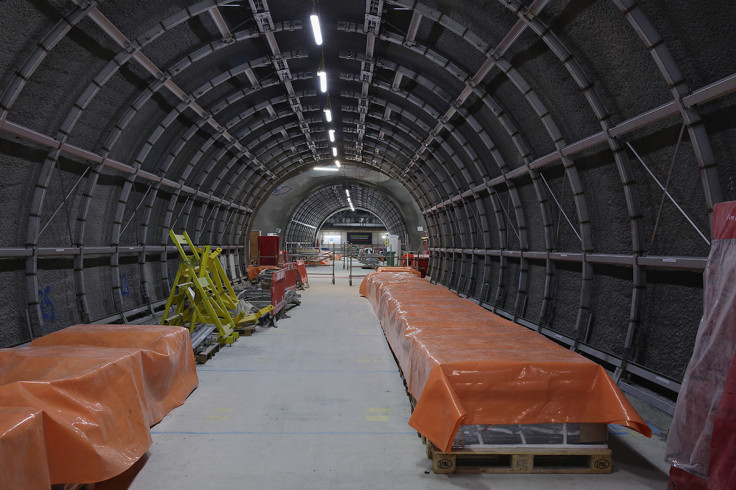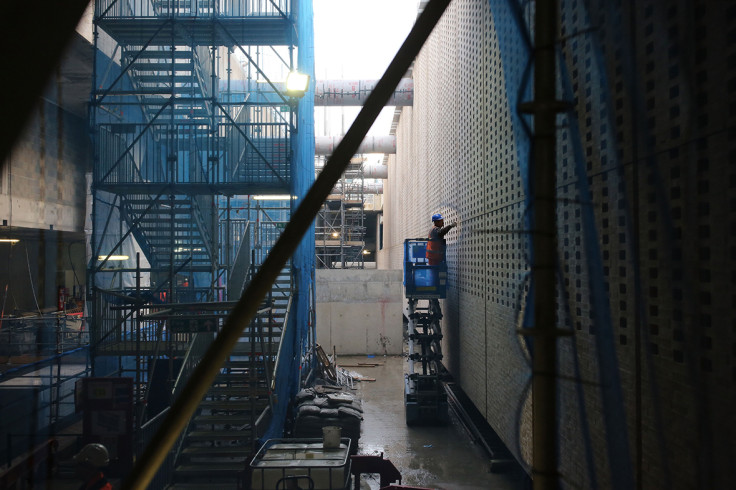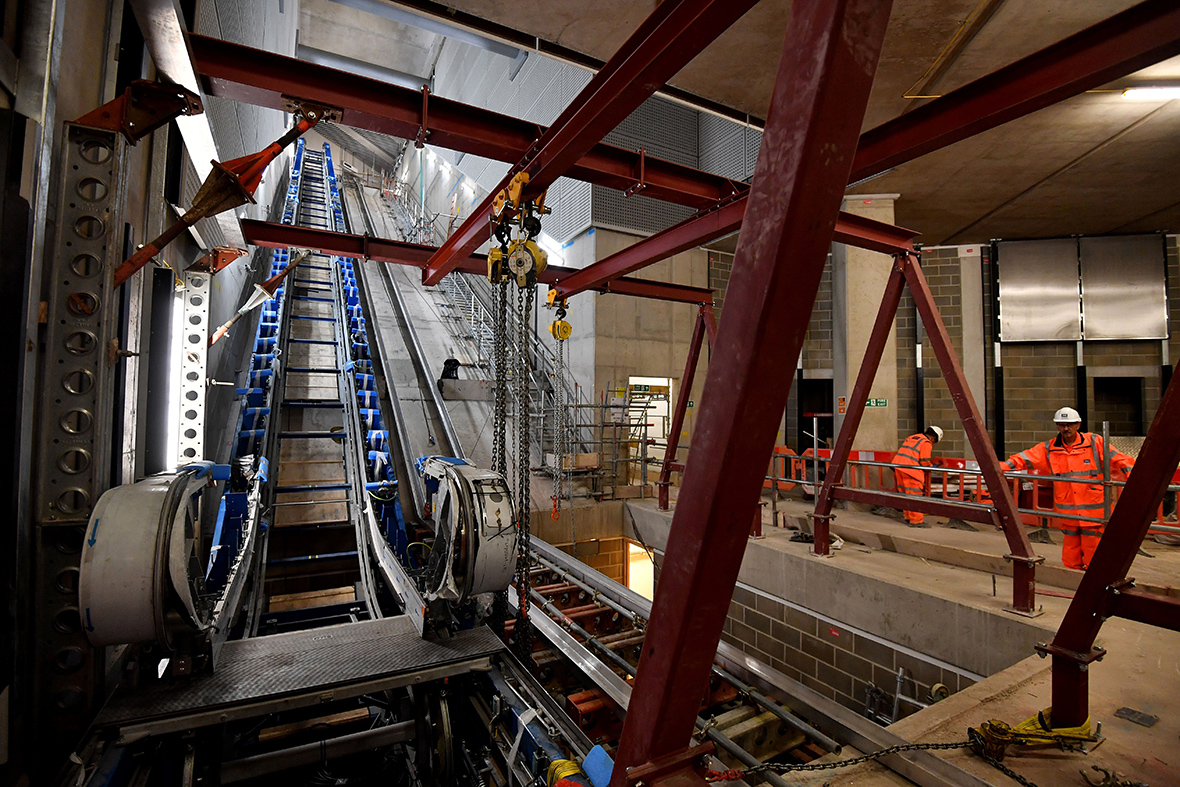Inside Crossrail: Exploring the tunnels and stations of Europe's biggest engineering project
Delivered by Crossrail Limited, the project will be run by Transport for London and will see 26 miles of new tunnels.
Europe's biggest infrastructure project, Crossrail – also known as the the Elizabeth line – is now more than 75% complete. Construction workers are continuing to build the stations of the innovative railway that will carry an estimated 200 million passengers a year.

Delivered by Crossrail Limited, the £14.8 billion project will be run by Transport for London (TfL) and will see 26 miles of new tunnels running from Reading and Heathrow in the west to Shenfield and Abbey Wood in the east. The project is on budget and is set to open in December 2018. It will link London's key employment and business districts such as Canary Wharf, the West End and Heathrow more efficiently than ever before. It will reduce journey times, increase central London's rail capacity by 10% and bring an extra 1.5 million people to within 45 minutes of central London.

Tunnelling finished in 2015 and the project is now focused on the complex job of fitting out the stations and tunnels with the equipment and systems needed to operate the railway. In the train tunnels, this includes the installation of track, tunnel ventilation, signalling, communications and overhead line equipment.
At the stations, the fit-out includes the installation of platforms, escalators, wall cladding and many of the architectural finishes that will make each Elizabeth line station complete. Named after Queen Elizabeth II, the line will have 40 train stations, including 10 new stations at Paddington, Bond Street, Tottenham Court Road, Farringdon, Liverpool Street, Whitechapel, Canary Wharf, Custom House, Woolwich and Abbey Wood.

Tottenham Court Road will become one of London's busiest stations once Crossrail opens. It will offer an interchange between the Northern, Central and Elizabeth lines and is expected to see more than 200,000 passengers pass through the station each day. Artwork by Turner Prize winning artists will feature inside the station, while an applied gold-leaf artwork by Richard Wright will form the ceiling of one of the eastern escalator boxes.



The Stepney Green caverns are some of the largest mined caverns ever built in Europe using a tunnelling technique called Sprayed Concrete Lining. They are approximately 50m long, 17m wide and 15m high. Stepney Green will have also critical role to play when Crossrail opens. It will divide the south-east spur running underground to Canary Wharf, Woolwich and then onto Abbey Wood. The northeast spur runs from Stepney Green through Pudding Mill Lane, Stratford, and then on to Shenfield in Essex.



Paddington station is set to undergo the most significant transformation since its completion in 1853. The new station will span three levels, with two entrances. A 90-metre clear opening will be covered by a dramatic steel and glass canopy eight metres above the ground that will let natural light flood down to the station platform. Printed onto the 120 metre long canopy will be a work of art by American artist Spencer Finch. The 'Cloud Index' will create a picture of the sky which will appear to change according to the light, the direction of the sun and the time of day.



© Copyright IBTimes 2025. All rights reserved.






















